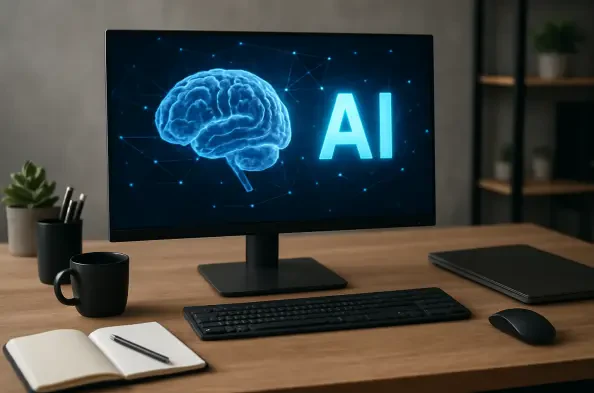What if billions of dollars poured into artificial intelligence are barely moving the needle for most businesses? Despite the relentless hype, a staggering number of companies find themselves trapped in a cycle of minimal returns on AI investments, with reports indicating that over 80% of organizations see no significant earnings growth from their AI initiatives. This eye-opening reality raises a critical question: are businesses missing a fundamental piece of the puzzle when it comes to harnessing AI’s true potential? The answer lies in a strategic approach that could redefine how industries evolve in an intelligence-driven era.
Unlocking AI’s Hidden Potential: Are Companies Missing the Bigger Picture?
The promise of AI as a game-changer has captivated boardrooms worldwide, yet the results often fall short of expectations. Many firms deploy AI for small, isolated wins—think chatbots for customer queries or basic data analysis—without rethinking the broader landscape. This narrow focus leaves transformative opportunities untapped, as resources are funneled into quick fixes rather than systemic change. The disconnect between ambition and outcome is glaring, and it’s time to confront whether current strategies are equipped to deliver on AI’s lofty promises.
Digging deeper, the issue isn’t just about technology but about vision. Companies often lack a framework to balance immediate operational needs with bold, future-focused innovation. Without a clear structure, AI becomes a tool for maintaining the status quo rather than a catalyst for reinvention. This gap sets the stage for exploring a dual-path strategy that could bridge the divide between short-term gains and long-term breakthroughs, offering a lifeline to organizations struggling to make AI work.
The AI DilemmWhy Investments Aren’t Delivering Returns
Behind the glossy headlines, a harsh truth emerges: most AI investments are not paying off. Studies reveal that while 78% of companies adopt AI in some form, the vast majority fail to translate these efforts into meaningful financial growth. The root cause often lies in a myopic approach—prioritizing incremental tweaks over disruptive transformation. This pattern mirrors past technology waves where enthusiasm outpaced strategic planning, leaving firms with tools they didn’t know how to wield effectively.
Another layer to this challenge is the misalignment between AI projects and overarching business goals. Many organizations chase trendy use cases without addressing foundational issues like data quality or employee readiness. The result is a fragmented effort that delivers sporadic benefits at best. Recognizing this dilemma is the first step toward a solution, as it underscores the urgent need for a structured method to harness AI’s capabilities in a way that drives both stability and growth.
Decoding the Bimodal Strategy: A Dual Path to AI Success
Enter the bimodal strategy—a framework that splits AI efforts into two complementary tracks for maximum impact. Mode 1 focuses on optimizing core operations, ensuring mission-critical systems like supply chains or customer support run with precision and efficiency through AI-driven automation. Meanwhile, Mode 2 emphasizes agility, pushing boundaries with innovative, customer-facing solutions or new market expansions. This dual approach allows companies to secure immediate wins while planting seeds for exponential progress.
Real-world examples bring this concept to life. In the financial sector, institutions balance Mode 1 by streamlining backend processes like fraud detection, while Mode 2 drives forward with personalized digital banking apps to attract younger demographics. According to a McKinsey report, small enterprises adopting this dual focus have scaled operations significantly faster than peers, with some growing into major players within a few years. The synergy of stability and innovation creates a powerful engine for sustained success.
The beauty of the bimodal framework lies in its adaptability. It acknowledges that no single strategy fits all—different industries and company sizes can tailor the balance between the two modes. By running these paths in parallel rather than sequentially, businesses avoid the trap of neglecting one area for the other, ensuring that AI serves as both a shield for current operations and a spear for future growth.
Voices of Insight: What Experts Reveal About Bimodal AI
Industry leaders and research firms alike point to the bimodal approach as a cornerstone for AI success. Reports from McKinsey, BCG, and PwC highlight a growing consensus: organizations must pursue optimization and innovation simultaneously to unlock AI’s full value. This dual focus prevents companies from becoming overly rigid or recklessly experimental, striking a balance that aligns with long-term strategic goals. Expert analyses consistently emphasize that without this duality, AI initiatives risk stalling at the surface level.
Consider a hypothetical scenario of a mid-sized retailer grappling with AI adoption. Initially, efforts to implement predictive inventory tools falter due to poor integration with existing systems, draining budgets with little return. After shifting to a bimodal mindset—using Mode 1 to refine logistics for cost savings and Mode 2 to launch an AI-powered customer recommendation engine—the retailer sees a 30% uptick in sales within months. Such stories, grounded in expert-backed principles, illustrate how this strategy turns frustration into measurable impact.
Beyond anecdotes, data reinforces the argument. Research shows that firms adopting a dual AI strategy report up to 25% higher operational efficiency compared to those stuck in a singular focus. These insights from thought leaders and real outcomes paint a compelling picture: the bimodal path isn’t just theoretical but a proven lever for transformation when applied with intent.
Making It Work: Practical Steps for a Bimodal AI Strategy
Turning the bimodal concept into reality requires a clear roadmap tailored to organizational needs. Start with Mode 1 by identifying core operations that demand stability—think automating repetitive tasks in manufacturing or enhancing data security in IT systems. These efforts should aim to cut costs or boost efficiency, freeing up resources like time and capital. A practical first step is conducting an audit to pinpoint bottlenecks where AI can deliver quick, reliable improvements.
Next, channel those gains into Mode 2 initiatives that fuel innovation. This could mean developing AI-driven products, like personalized healthcare apps, or exploring untapped markets with predictive analytics. Allocate a dedicated team to experiment with these projects, ensuring they operate with flexibility to test and iterate without disrupting core functions. Success in this mode hinges on a willingness to embrace calculated risks, learning from failures as much as from wins.
Finally, build a culture that supports both modes by upskilling employees and aligning AI efforts with broader business objectives. Training programs can equip staff to handle AI tools effectively, while leadership must foster an environment where experimentation is encouraged. Regular reviews of progress in both modes ensure they remain interconnected, with Mode 1 efficiencies feeding Mode 2 ambitions. This holistic approach transforms the bimodal strategy from a concept into a dynamic, actionable plan for any organization ready to evolve.
Final Reflections and Next Steps
Looking back, the journey through AI’s challenges and the bimodal solution reveals a stark contrast between missed opportunities and achieved potential. Companies that clung to narrow, incremental uses of AI often found themselves outpaced by competitors who embraced duality. The stories of transformation, backed by expert insights, paint a vivid picture of what is possible when stability and innovation work hand in hand.
Moving forward, the path is clear for those willing to act. Businesses should begin by assessing their current AI efforts through the lens of the bimodal framework, identifying areas for operational refinement and bold experimentation. Investing in employee training and fostering a mindset of adaptability will prove crucial. As the landscape continues to shift, staying committed to this dual strategy offers a way to not just keep up but to lead in an era defined by intelligence and ingenuity.






